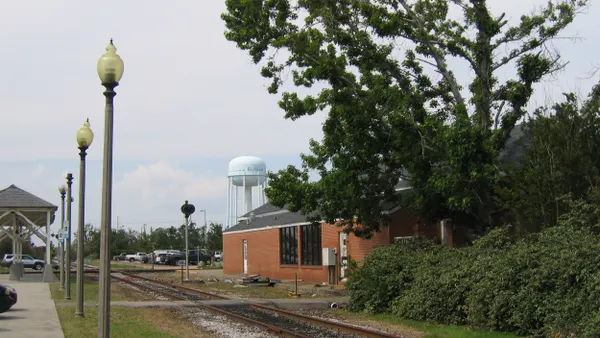Dive Brief:
- It is possible to achieve zero traffic fatalities if we "fundamentally rethink" the nation’s approach to transportation planning, even as traffic deaths continue to climb, said U.S. National Transportation Safety Board (NTSB) Chair Jennifer Homendy at the Governors Highway Safety Association’s (GHSA) annual conference in Denver on Monday.
- An estimated 8,730 people died in motor vehicle crashes in the first quarter of 2021, according to data the U.S. Department of Transportation's National Highway Traffic Safety Administration (NHTSA) released earlier this month. That's a 10.5% increase compared with the first quarter of 2020, despite a decrease in vehicle miles traveled (VMT).
- Federal, state and local-level transportation officials should consider a safe-systems approach that uses road design to minimize potential accidents, said Homendy. "The current approach, which favors automobiles and punishes only drivers for crashes, is clearly not working,” Homendy said.
Dive Insight:
An estimated 38,680 people were killed in traffic accidents in 2020, NHTSA estimates, which is the highest total since 2007. According to GHSA projections, there were 6,721 pedestrian deaths in 2020, a 4.8% increase from 2019, which was the highest year-over-year jump recorded.
The National Safety Council (NSC) also released a preliminary estimate last week projecting a 16% increase in motor vehicle deaths in the first half of 2021 compared with 2020, with the number of deaths in that period increasing from 18,480 to 21,450. The figures "are not only alarming but devastating as we see once again too many lives lost on the roads," NSC President and CEO Lorraine Martin said in a statement.
The "alarming" number of deaths came even as the nation saw fewer vehicle miles traveled due to pandemic lockdowns and many commuters continuing to work from home. NHTSA estimated a 14.9 billion-mile decrease in VMT in the first three months of 2021 compared with 2020, which is a 2.1% drop. That meant there were 1.26 fatalities per 100 million VMT in the first quarter of 2021, compared with 1.12 deaths per 100 million VMT in the first quarter of 2020. That increase is evidence that reducing VMT "isn’t the solution," Homendy said, and the reduction could have even contributed to more deaths because less congested roads allowed drivers to speed.
Several states and cities have adopted Vision Zero programs with goals to use design and alternative transportation options to eliminate traffic deaths. Homendy pointed to the progress made in recent decades to eliminate most airline fatalities as proof that those ambitious goals are achievable with a "shift in the way we think about traffic safety."
"We spent decades planning, designing, building and operating our road system for the efficient movement of people and goods rather than safety," Homendy said. "We spent decades developing countermeasures and behavioral interventions that are targeted at individuals rather than the entire system."
The safe system approach, which originated in Scandinavia and has been adopted in some form in several other countries, takes a holistic approach to designing traffic systems to minimize crashes and make any accidents that do occur less harmful. Those efforts can include reducing speeds, redesigning intersections and establishing safer vehicles to protect drivers and passengers. The approach, essentially, removes responsibility from drivers to eliminate all mistakes and uses design elements to make those mistakes less impactful.
The $1 trillion infrastructure bill the Senate passed in August contains increased funding for communities to adopt transit and alternative transportation, potentially reducing the number of drivers on the road. The bill would also require the government to set standards for vehicle technology to stop impaired drivers. As tech and automotive companies advance autonomous- and connected-driving technology, many policymakers have also expressed confidence that smarter vehicles could help prevent crashes.
Technology alone will not guarantee safety, however, said Nat Beuse, vice president of safety for self-driving technology company Aurora, at the GHSA conference, noting his company also sees a role for collaboration with policymakers to make sure autonomous vehicles are integrated into a safer road system. "Safety’s not a destination, because you’re never done," Beuse said. "It’s always a constant journey, it’s always something you have to work at."










